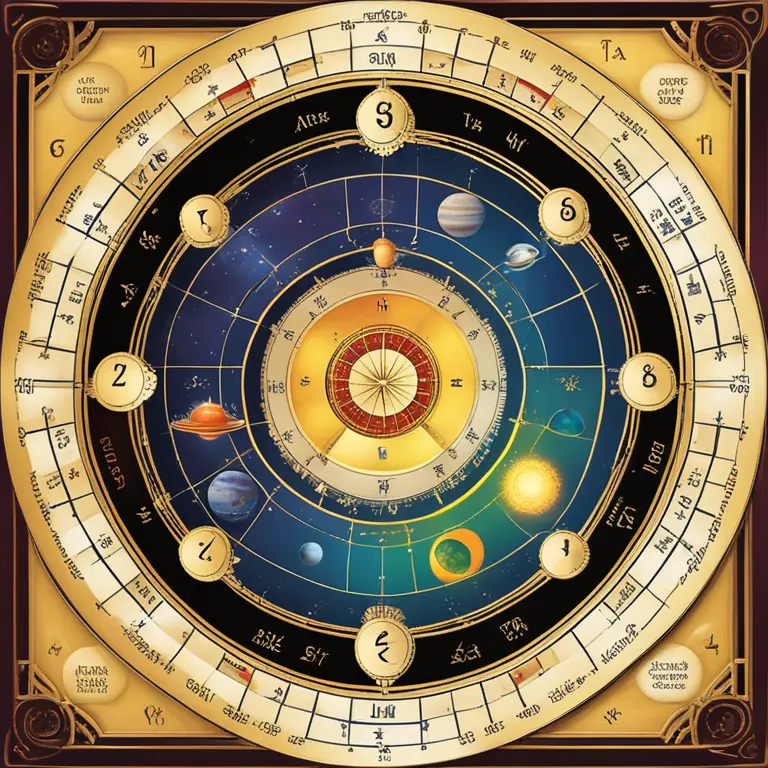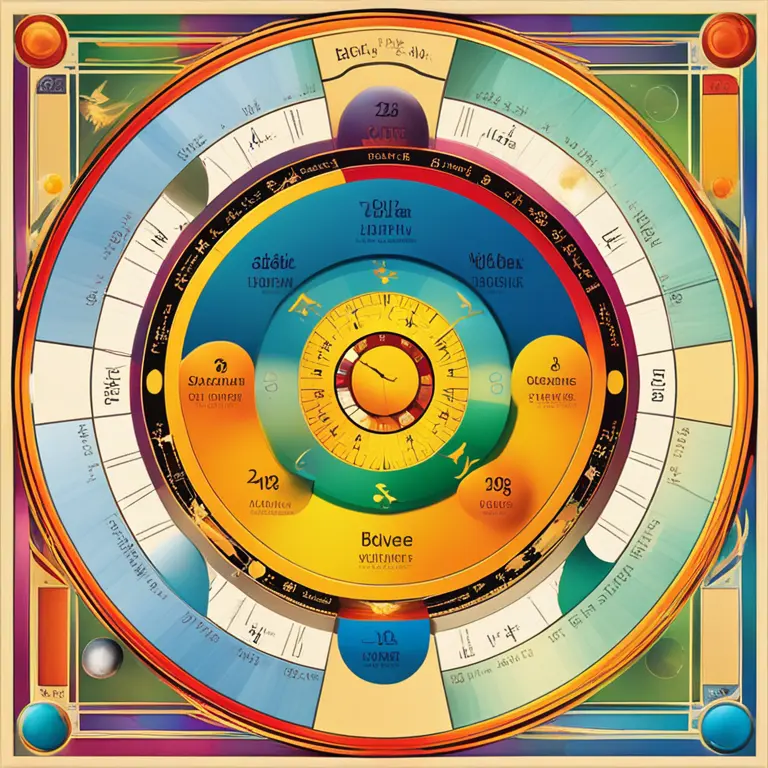
Your Astrological Blueprint: Insights from Birth Chart Placements
Delve into the complexities of your astrological birth chart to uncover the cosmic influences shaping your personality, potential, and path.
article by Priya Deshmukh
An Introduction to Birth Charts
A birth chart, also known as a natal chart, is a celestial snapshot of the sky at the moment you took your first breath. The chart is a wheel that represents the position of the planets, the Sun, and the Moon, as well as the astrological houses and various aspects between celestial bodies. Astrologers interpret this intricate diagram to gain insights into one's character, life themes, and even future trends. As we progress through 2024 and beyond, understanding the fundamentals of birth charts remains a keystone within astrological studies.

The Components of a Birth Chart
A birth chart is composed of several elements. Zodiac signs, which represent energies and archetypes, are one of these components. The planets, each holding specific influences—from personal (like Mercury) to generational (like Uranus)—are another. Houses, the twelve segments that correlate to different life areas, give context to where these energies play out. Then come the aspects, the angles formed by planets to each other, suggesting dynamic relationships between the diverse parts of our personality and life experiences.

Significance of Planetary Placements
Planetary placements in a chart reflect the nuanced complexity of an individual's makeup. The Sun's position discloses your core identity, while the Moon governs emotions. Learning about the iterations of these placements can be profound. Mercury's position, for example, can reveal communication styles, while Venus sheds light on love and Mars on conflict resolution. As we move deeper into this age of personalized astrological readings, the importance of understanding these placements becomes ever more distinctive.

The Rising Sign and the Houses
The Rising Sign, or Ascendant, starts off the first house and is critical in understanding one's approach to life. It symbolizes your mask to the world and affects personal style and impressions. Each subsequent house, adjacent in space from the first to the twelfth, addresses a different aspect of existence—including career, relationships, and subconscious patterns—opening a narrative flow that defines our experiences. In the years to come, recognizing these house meanings will empower individuals to harmonize with their surroundings.

Interpreting Aspects and Transits
Aspects, formed between planets, color the way these energies interact, with conjunctions, sextiles, squares, trines, and oppositions, each bringing a unique interplay. Understanding these influences provides additional layers to our astrological story. Moreover, transits—where planets move after birth—interact with natal chart placements, speaking to the transformative processes we all undergo. With upcoming shifts in planetary alignments, awareness of transits will offer foresight that is increasingly sought after.
Modern Astrology and You
Contemporary astrology embeds both an ancient art and a modern science, symbolized by the birth chart's profound depth and potential for personal growth. As we progress further into the technological era, the accessibility of birth chart interpretations through advanced software and personalized algorithms has never been greater. Yet, irrespective of the year or the gadgetry available, the birth chart remains a personal cosmic map, drawn uniquely for each individual's journey.
Published: 1/22/2024
Modified: 1/22/2024
More predictions
Come back here soon to learn more about yourself and your future


Moon Phases & Astrological Affect
Discover how the moon's phases and location impact astrology, affecting personal moods, behaviors, and life events.


Moon Phase Calendar For 2024: A Guide
Dive into the lunar journey of 2024 with our Moon Phase Calendar, guiding your astrology practices and syncing with the celestial rhythms.


The Lunar Cycle & Its Impact on Life
Discover how moon phases impact daily life, personal growth, and more in our guide to the lunar cycle's significance.